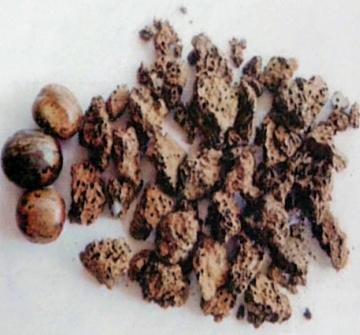
Rubber seed cake (Hevea brasiliensis)
Synonyms: Ficus cordata, Ficus decora Common names: Rubber, Para rubber
Rubber tree is a large spreading evergreen tree native to north-east India, the eastern Himalayas, and south-east Asia. The tree can yield milky white latex, which has been used to make rubber. The young rubber leaves are poisonous to most animals, causing profuse sweating, paralysis and ultimately death. The potential availability of rubber-seed cake is 0.15 million tones annually in India (Banerjee, 2000). A good quality rubber seed cake contains about 35% CP and 55% TDN.
Deleterious factor
Rubber seed cake contains hydrocyanic acid but its level is too low (0.009% or 9 mg/100g) to produce any toxic symptoms. Roasting, toasting and water soaking can be followed for detoxification of rubber seed cake.
Inclusion
Rubber seed cake can be incorporated up to 30 and 25%, respectively, in the concentrate mixture of crossbred calves (daily gain 500 g) and milch cattle (daily yield 7-9 kg), (Punj, 1988).
